
This is a one-storey tall stack of parcels in the chute. But it isn’t a busy day for SingPost.
It’s 8am. I’m half-asleep, but I seem to be the only one. At SingPost’s Regional eCommerce Logistics Hub, business is already in full swing. Vans are moving out, each accompanied by the SingPost’s couriers who are also known as parcel ambassadors.
Delivery staff lead a hard life. They face our wrath for failed deliveries and missing packages. In the past, without established protocols or evidence collection, it was difficult to establish their innocence if things went missing.
Now, tech – like transport management software – makes transparent, fair, accurate, and prompt delivery possible, as all deliveries are logged online with checks and balances. For example, barcode scanning ensures that the number of packages to be delivered is correct. Or, before a delivery can be completed or marked as failed, the delivery man’s app will require a mobile code from the customer.
But does technology really help ease the courier’s job? I try to find out by becoming one for a day.
Tech helps expedite morning deliveries
Thanks to the fully-automated facility that sorts parcels by postal code, all that’s left for parcel ambassadors in the eComm Log Hub to do is to transfer the parcels to their vans. The chute attached to the sorting system is also extendable almost to the vans’ tailgates, allowing delivery staff to move their packages more effortlessly especially when things are heavy and hectic.
The system, which can sort up to 100,000 packages a day, may also run overnight during peak periods. Tuesdays tend to be their busiest days.
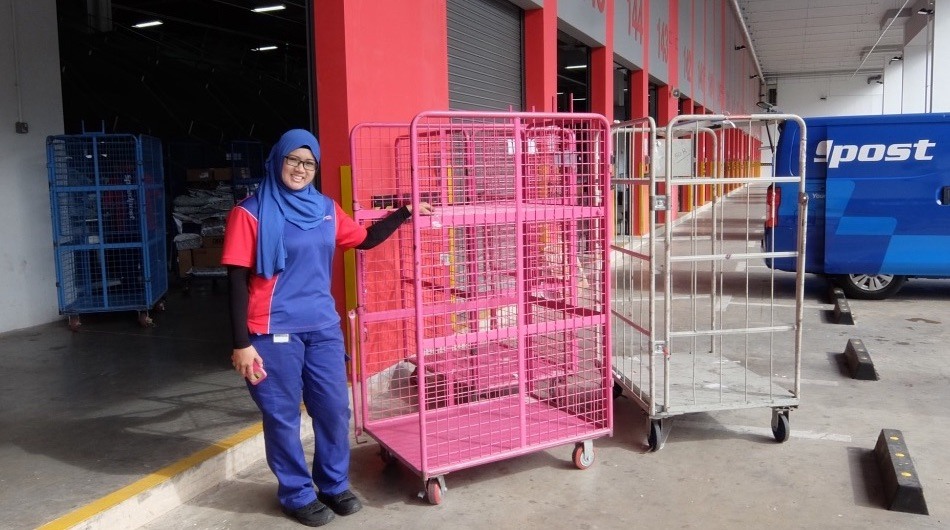
Ismadiana Binte Samsudin, a parcel ambassador in SingPost.
Ismadiana Binte Samsudin (Diana), a parcel ambassador in SingPost, has been delivering parcels for three years. Becoming a parcel ambassador isn’t easy. On top of classroom and on-the-job training, there’s also a written assessment test at the end of the induction program for new ambassadors.
“We report at 7:30am to load parcels to the van at the eComm Log Hub. We will head out for deliveries by 8.30am to avoid rush hour,” Diana says.
A day for her typically ends in the evening after all deliveries are completed, where she reports back to the eComm Log Hub with the parcels which she didn’t manage to deliver (as no one was home).
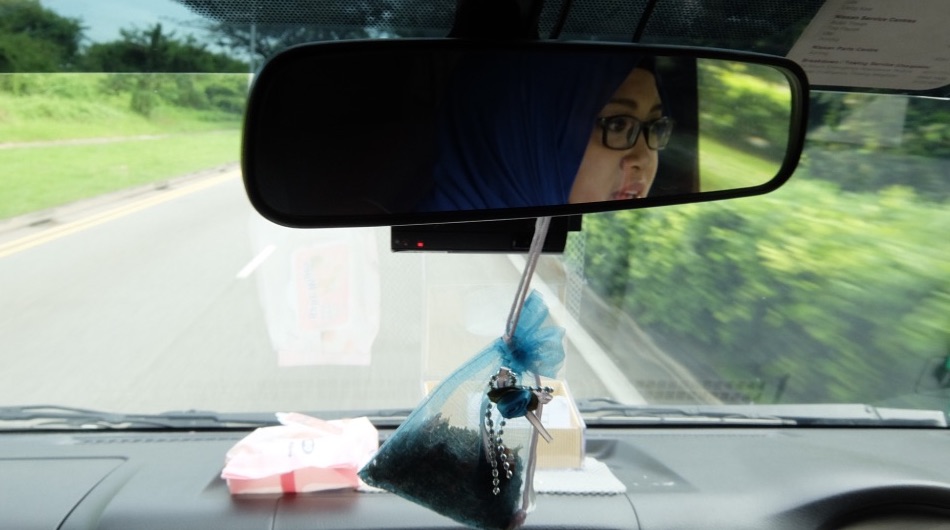
A parcel ambassador’s workstation. Diana’s assigned van is lovingly personalized with a scented sachet.
The weather was balmy and merciful – a pleasant change from the past two stormy days. “When the weather is bad, I just use an umbrella,” Diana laughs. It’s hard to imagine how she carries an umbrella with the multiple parcels she juggles in her arms.

The delivery addresses are grouped together, allowing Diana to walk to each location quickly. Minimizing the search and delivery time is one convenience that the automatic sorting system brings.
We scour the neighborhood, navigating steps and searching for the right block. After getting to there, we have to look for the lift, which could be hard to find.
On days with high parcel volumes, Diana expects to deliver over 80 parcels. If you take one minute to answer your door or your phone, that’s about an hour and a half of the deliverer’s time in total. Every minute counts. If robot doorstep deliveries are possible, that’s a lot of man-hours saved.
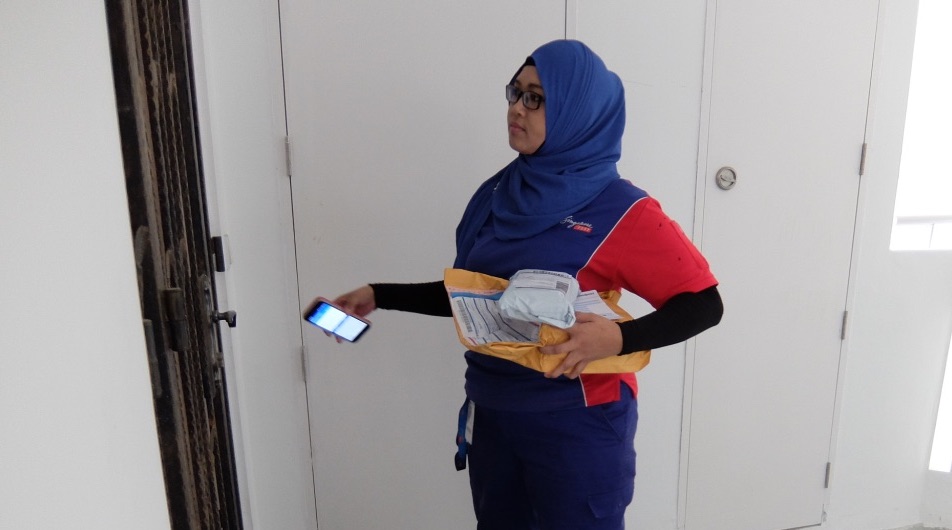
Waiting for the recipient.
An unsuccessful delivery means that Diana has to input the right reason on ezyTrak Mobile, SingPost’s delivery application, which provides visibility for all parcels. After that, she updates the system with the status of the delivery. In total, she spends about three to five minutes at each residence.
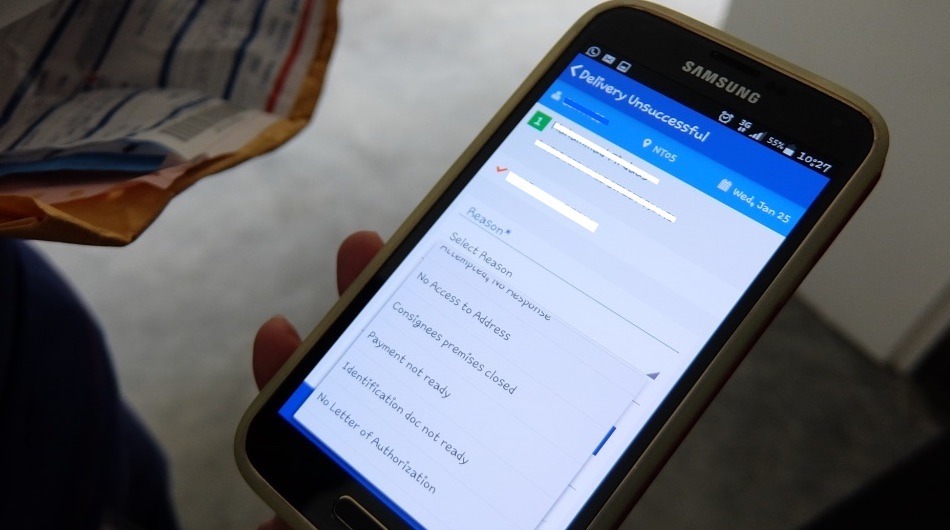
Entering the reason for unsuccessful delivery on ezyTrak Mobile. After this, Diana leaves a note at the door requesting the recipient to collect the parcel from the nearest Post Office or POPStation.
Diana tells Tech in Asia that while she does about 80 home deliveries a day, she can deliver up to 200 parcels to a single POPStation location. POPStation (Pick Own Parcel Station) is SingPost’s parcel service which allows parcel ambassadors and customers to drop off and collect parcels. This significantly lessens Diana’s workload.
And yes, she lifts all these parcels off the van, and up and down steps.
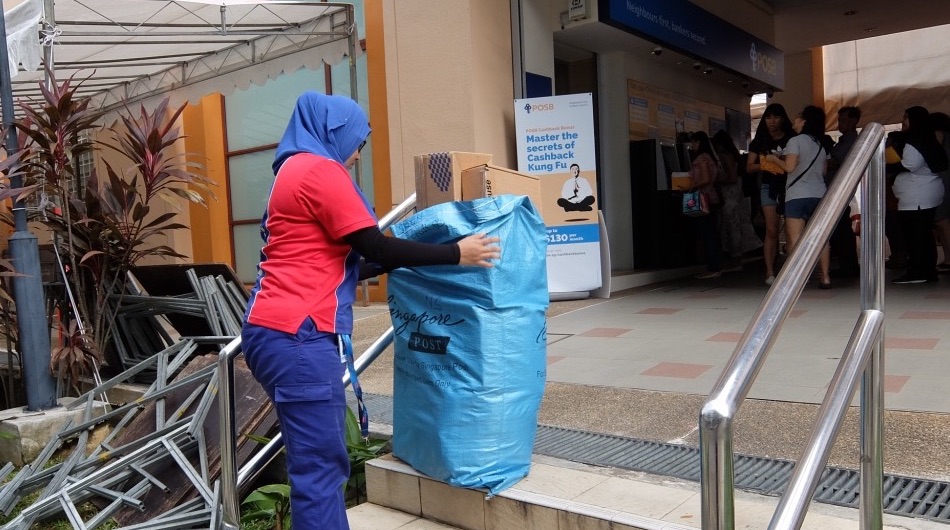
Diana lifts a heavy stack of parcels up a flight of stairs.
“Due to the busy lifestyles of our customers, about 15-20 percent of customers are not at home to receive their parcels. The volume of parcels going to our customers through our POPStations has increased tremendously since we first started,” says Lim Ann Nee, senior vice president of SingPost. “About 65 percent of the customers pick up their parcels after work and over the weekends, while the rest do so during working hours – especially during lunchtime.”
“Most customers collect their parcels within 1-2 days. The successful delivery rate in close to 100 percent,” says Ann Nee.
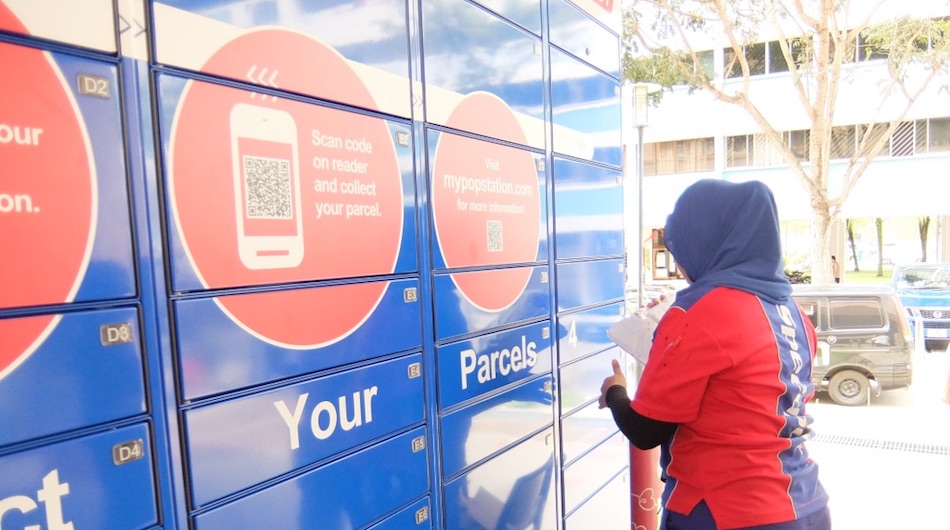
All in a day’s work – and more.
After Diana slots the parcels into each POPStation locker, an SMS notification will be sent to the recipient automatically. Subsequently, emails will be sent on a daily basis to remind them to collect their parcels.
By 11am, we’re already feeling tired. But the day doesn’t end for parcel ambassadors. Diana tells us that she needs to go back to the eComm Log Hub. “The app (ezyTrak Mobile) knows when I’m done with my work. It automatically assigns us work when we’re done early.” She feels that it’s efficient this way.
Tech + Experienced drivers = Better delivery service
For our next stop, we meet up with Fahmi Aziz, a fleet supervisor at last-mile logistics company Ninja Van. Having delivered for traditional companies with manual paperwork in the past, he now manages a fleet while delivering packages of his own.
Ninja Van’s app has been a big help. Fahmi says that it allows veteran delivery people to complete up to 120 deliveries. “For example, I can finish 100 parcels by 4-5pm with the app,” he says.
A typical day for Fahmi begins at 6am, from the moment he checks his delivery schedule. Scanning takes about an hour. He starts delivering at 8am.
During his pen-and-paper days, 50 deliveries could take him 12 hours to complete.
“I tried to complete 100 deliveries manually,” he laughs. “It just wasn’t possible.” The delivery data printed on paper couldn’t give delivery staff an aggregated view of deliveries and was easily crumpled as well.
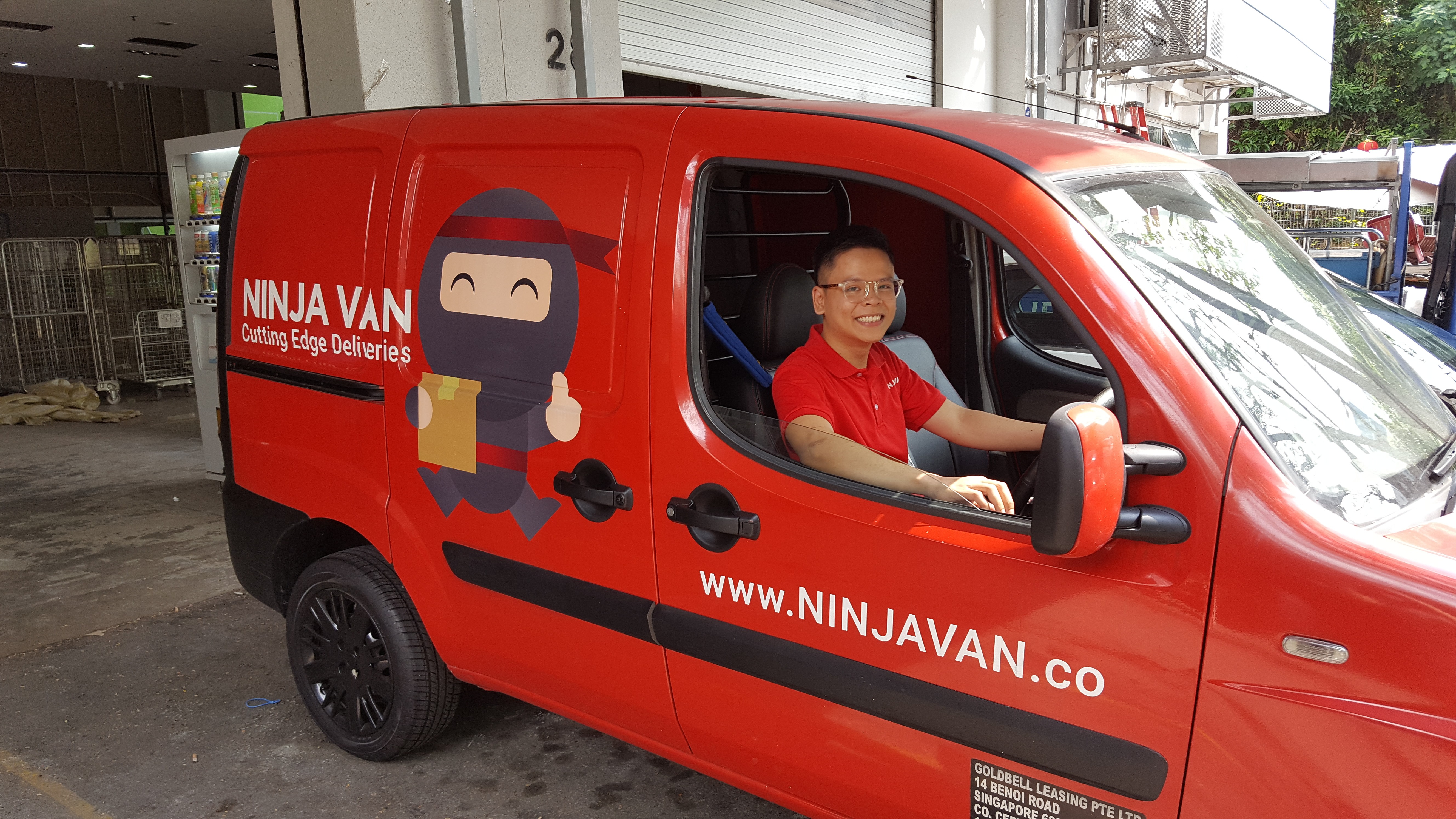
Fahmi Aziz, fleet supervisor at Ninja Van.
After consulting drivers, Ninja Van’s developers built a complete list of delivery failure reasons, Fahmi says. Some of these reasons are obscure or unexpected, but commonly encountered by delivery staff.
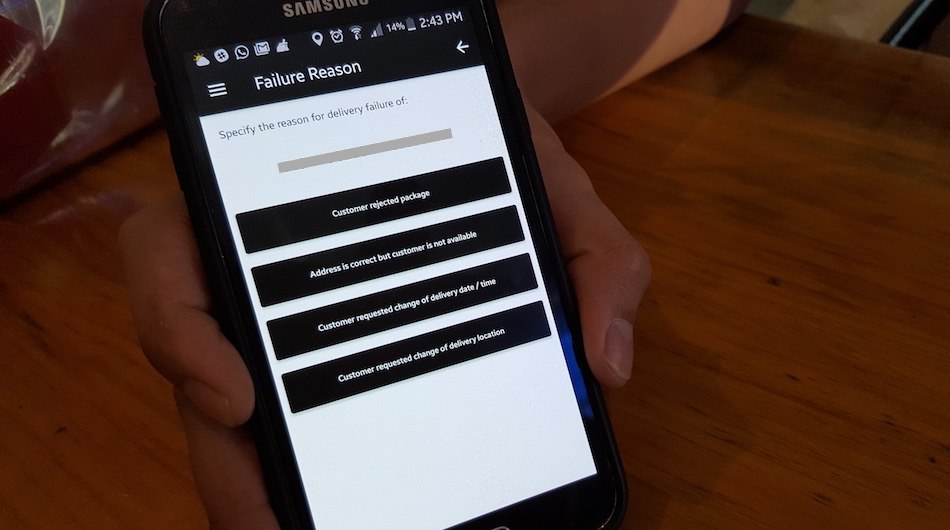
When Ninja Van’s delivery staff fail their delivery, they must provide a reason.
For example, we assume that doorstep delivery is a one-way process that results in the acceptance of the package. However, delivery staff can experience goods being rejected by the receiver. Tapping this option on the Ninja Van app will open up more reasons why the package was rejected, ranging from a change in heart to defective goods or packaging.
Also, receivers have to provide a mobile code when unorthodox but commonly requested parcel dropoffs are requested, such as in the utilities box. This means delivery staff can’t abandon parcels, and they can’t be accused of being reckless with the delivery either.
Such apps can be powerful in protecting drivers too. When delivery staff collect parcels for delivery from shippers, they scan them immediately. This ensures that the number of parcels due for delivery is correct, and delivery staff cannot be blamed for lost or forgotten parcels by shippers.
The human element
Even as tech increases efficiency, delivery staff still play a huge role in getting your goods into your hands.
“I’ve come across many fussy and challenging customers, but I believe it’s our responsibility to stay cool and continue to provide good service,” says Fahmi.
Diana from SingPost keeps a stack of plastic bags in her van, along with adhesive tape and scissors.
“Some people just throw everything – the clothes for returns to the eMerchants, and the return slip, into the POPStation without placing it in a bag,” she says. It’s frustrating. But when she encounters that, she collects the articles of clothing, bags, and seals it neatly for them.
Fion Tan, co-founder and managing director of Singapore at Lalamove, relates an incident where an experienced driver was more accurate than Google Maps. “He pointed out one postal code out of a list and said it was wrong,” she said. “It took him only twenty seconds!“
On an online map, the postal code shows a location in Tuas, an industrial area in west Singapore. However, the exact location was somewhere in Jurong Island – an offshore location.
Thanks to this driver, that’s one less unsuccessful delivery.
Companies featured in this article will be showcased at the Last Mile Fulfilment Asia (LMFAsia) 2017, which will take place on March 2-3, 2017, at Singapore EXPO. Themed “Go Global, Deliver Local”, LMFAsia 2017 is the region’s only conference and exhibition dedicated to ecommerce fulfillment, where leading experts from the retail, ecommerce, parcel, and logistics industries will dive deep into the topic of cross-border ecommerce fulfillment. For more information, please visit their website.
This post I spent a day in the shoes of a last-mile courier. Here’s what I learned. appeared first on Tech in Asia.
from Tech in Asia https://www.techinasia.com/delivery-men-tech
via IFTTT
No comments:
Post a Comment